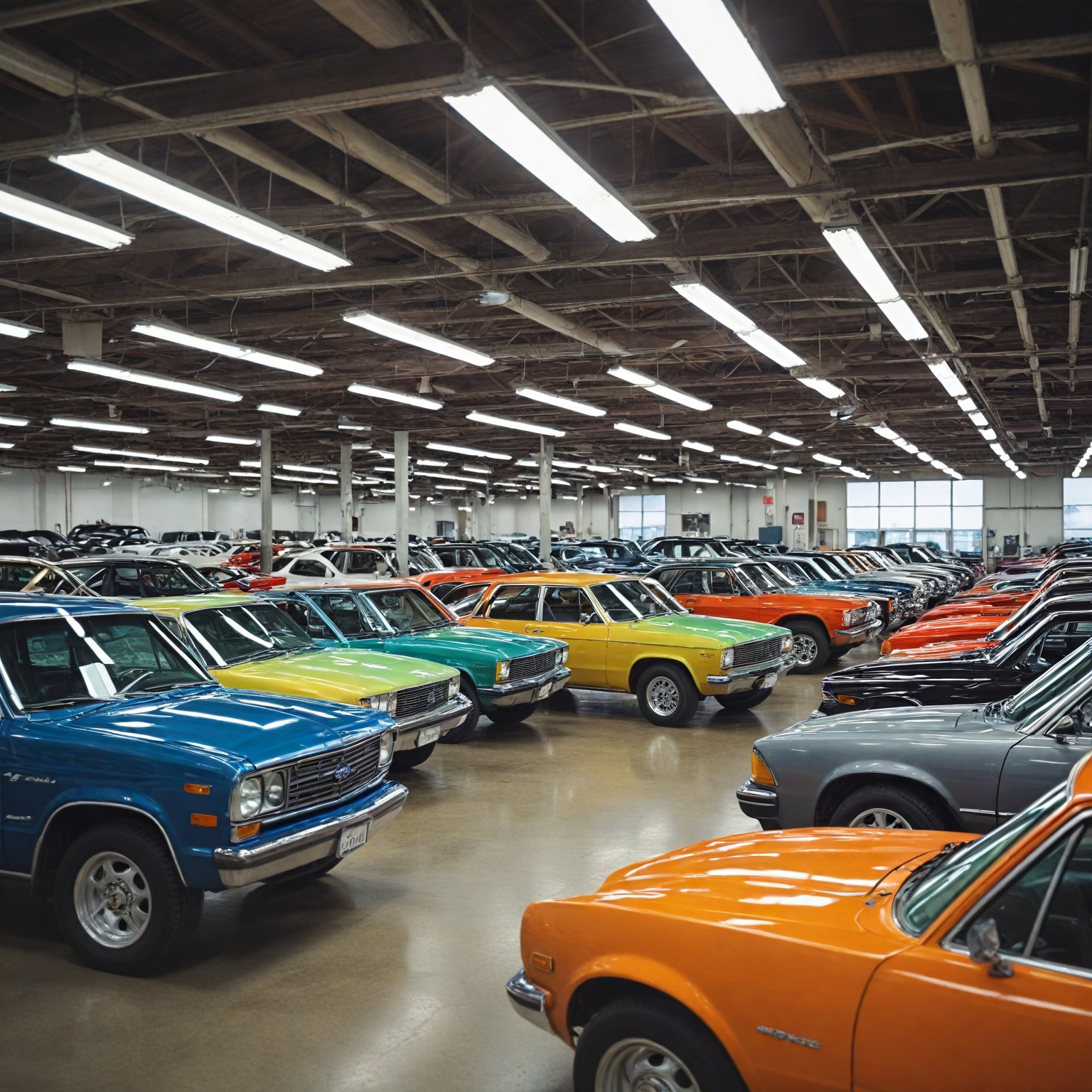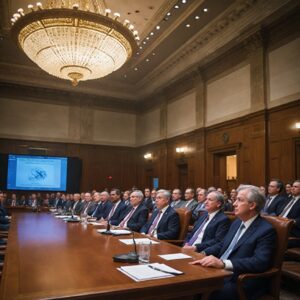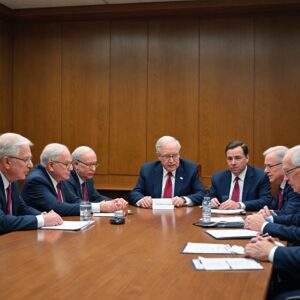Summary
The Impact of Trump Tariffs on Car Insurance Premiums discusses the significant implications of the tariffs implemented by the Trump administration on the global automotive industry, specifically their effect on car insurance premiums. These tariffs, which include a 10% additional tariff on imports from China and proposals for tariffs on Canada and Mexico, were introduced with the intention of addressing what Trump viewed as unfavorable trade balances with these countries. The tariffs affected the auto industry, leading to changes in automakers’ business strategies, possible job losses, and increased costs for consumers. A less obvious but equally important impact of these tariffs is on the car insurance industry. As the costs of imported auto parts rise, so does the cost of car repairs, which influences the calculation of insurance rates. The article further discusses the effects of these tariffs on car insurance premiums, responses within the insurance industry, and the broader economic implications. However, the exact implications of these tariffs on car insurance premiums remain uncertain, with some experts suggesting it is a “waiting game”.
Background
The global automotive industry is deeply interconnected, with parts crossing national borders multiple times before being used in the final assembly of a vehicle. For instance, a report obtained from the American Property Casualty Insurance Association (APCIA) indicates that around 60% of auto parts used in body shops are imported from Mexico, Canada, and China. It is therefore not surprising that changes in international trade policies, such as the imposition of tariffs, can have significant implications for this industry.
The Trump administration proposed a series of tariffs early in its first term, impacting both goods and services. One proposed tariff was an additional 10% on all imports from China. Comprehensive tariffs on Canada and Mexico were also proposed, but implementation was delayed. Furthermore, in a separate announcement, the administration proposed a 25% tariff on goods from Canada and Mexico, as well as an additional 10% tariff on products from China. These tariffs are expected to significantly impact the global automotive industry, possibly leading to changes in the business strategies of automakers.
Automakers could respond to these tariffs by shifting production to the United States or redirecting vehicles and parts made in Canada, Mexico, and China to other global markets. However, regardless of the specific measures taken by companies, it is likely that workers will feel a negative impact. Moreover, there are concerns that tariffs on auto and parts imports could increase the cost of vehicles.
It’s worth noting that tariffs may also affect services that are indirectly related to the automotive industry, such as car insurance. According to Matt Brannon, a data journalist at Insurify, the impact of tariffs on services like car insurance is often overlooked. In fact, tariffs on imported auto parts could lead to increased repair costs, which would in turn influence the calculations of insurance rates. However, the exact implications of these tariffs remain uncertain, with some experts suggesting it is a “waiting game”.
Donald Trump’s Presidency
During his presidency, Donald Trump proposed and implemented numerous tariffs that had significant impacts on the global automotive industry and subsequently, car insurance premiums. His administration imposed a 10% additional tariff on all imports from China, along with tariffs on Canada and Mexico, which had been set to take effect simultaneously but were eventually delayed. Trump’s tariffs were part of a larger goal to redress what he viewed as unfavorable trade balances with various countries and the offshoring of U.S. manufacturing.
The proposed tariffs, particularly those affecting North American borders, posed a significant risk to the auto industry. Threats of imposing a 25% tariff were likely to disrupt more than three decades of free trade across North America, affecting every facet of the automobile business. On a sales basis, automakers most exposed to the tariff risk included German company Volkswagen, Nissan Motor, and Stellantis, according to reports by S&P Mobility.
The tariffs were expected to raise prices, constrain consumer spending, and depress economic growth, contrary to Trump’s economic growth goals. Specifically, new-car sales were at risk due to both the direct impact of tariffs on imported cars and parts, and the indirect effects of tariffs on other goods. A tax on car parts and vehicle imports could lead to a reduction in vehicles sold, job losses across the sector, and increased costs for consumers. Repair and maintenance costs were also predicted to rise.
Apart from the automotive industry, these tariffs could affect the prices of all kinds of consumer goods. On the other hand, mitigation factors included potential cushions built by insurance companies by raising rates in preceding years. But continuous tariffs would drive up costs of auto production, repair, and insurance sustainably, causing long-lasting impacts on the market and auto insurance pricing.
Impact of Trump Tariffs on the Auto Industry
Rising prices for steel and aluminum due to the tariffs potentially impacted businesses’ profitability and cash generation, especially for Tier 1 and Tier 2 producers. These trends would only be exacerbated if the additional 25% auto industry tax was enforced.
Future impositions of tariffs on car parts and vehicle imports could severely affect the industry, possibly leading to increased insolvencies. Studies estimate that this tax could result in a 2-million unit reduction in vehicles sold and a total job loss of more than 700,000 across the sector. From a consumer perspective, the tariffs could add as much as USD 6,400 to the cost of a USD 30,000 vehicle in the US, which would increase monthly payments by up to USD 120. Repair and maintenance costs could also increase significantly.
The tariffs not only affected the cost of cars and car parts but also had an influence on auto insurance costs. More expensive vehicles and repairs led to auto insurance companies paying out more to repair and replace vehicles after covered claims, which were costs passed on to consumers in the form of higher premiums.
Impact of Trump Tariffs on Car Insurance
The tariffs proposed by President Trump, particularly a 25% tariff on imported cars, have been speculated to impact the auto insurance industry significantly. Experts suggest that the costs of these tariffs would be passed on to consumers in the form of increased insurance premiums due to the higher costs of repairing and replacing vehicles and parts, many of which are imported.
It’s also important to consider that the cost of insuring a vehicle is often based on the estimated cost of future claims for damage or loss of the vehicle. Higher-priced cars generally cost more to insure due to increased repair costs, theft records, and the nature of damage a vehicle may incur in a crash.
Insurance costs are particularly sensitive to tariffs as costlier cars or auto parts can increase claims costs. These costs often take time to filter through to car-insurance rates. As of January, a month-over-month increase brought motor vehicle insurance costs up by 11.8%, following a similar increment in December.
However, the impact of these tariffs is not solely on repairable vehicle costs, but also on the total loss side of the claims equation, which includes the replacement and disposal of totaled vehicles. Consequently, understanding the tariff impacts on auto prices and repairs can help predict how they are influencing insurance costs for drivers. Today, the average cost of full-coverage auto insurance is $2,313 per year, but for many drivers, particularly in six states, annual premiums exceed $3,000, making car ownership even more expensive.
Detailed Effects of Tariffs on Car Insurance Premiums
Car insurance premiums are greatly influenced by tariffs. According to a Wall Street Journal report, the effect of tariffs on auto insurance rates is significant because higher car prices increase repair costs, which in turn cause insurance premiums to rise. This intricate relationship between tariffs and car insurance pricing often goes unnoticed by the average driver. However, levies on automobile parts and used vehicles have a substantial impact on auto-related costs and contribute to high inflation in the U.S. This phenomenon was particularly observable following the imposition of new tariffs on steel, aluminum, and potentially imported semiconductors, as well as “reciprocal tariffs” matching those set by other nations by President Trump.
The effect of tariffs on car insurance premiums is not primarily seen in the cost of repairable vehicles, contrary to what many initially believed. This is because most aftermarket collision parts are not subject to auto parts tariffs and the steel and aluminum tariffs being lifted from Mexico and Canada. Instead, the tariffs’ effect is observed in the increase in totaled vehicles, which are deemed such when repair costs exceed the actual cash value (ACV) of the vehicle. In such cases, drivers receive a claim payout for the ACV minus their deductible. With additional tariffs, vehicles are being declared total losses at a higher rate, forcing drivers to buy new cars sooner than expected.
Car insurance premiums have been on an upward trend in the U.S. for the past six years, with projections showing a continuation of this trend into 2025. As of January, auto insurance premiums had risen by 55% since early 2020, a phenomenon paralleled by significant increases in car prices. Tariffs are poised to exacerbate these increases, particularly with planned duties on steel and aluminum, essential materials for vehicle production. Furthermore, proposed 25% tariffs on the North American borders, though currently delayed, threaten to disrupt free trade across North America and add further price pressure to the auto industry. Lastly, auto insurance costs began to rise quickly in 2022 and 2023 as Americans who had worked from home during the Covid pandemic began commuting to work more frequently.
Response to Tariffs within the Insurance Industry
In state-regulated insurance policies, such as auto and home policies, insurers cannot easily include future risks in their pricing. They need to demonstrate current cost drivers when petitioning regulators for future rate increases. Additionally, once a policy is written, its price is set until the time of renewal. In response to a question on tariff policy during an earnings call, Michael Klein, the president for personal insurance at Travelers, stated that changes in pricing would be reflected only when the insurers are certain of what those changes are.
Broader Economic Implications of Trump Tariffs on Car Insurance
The proposed tariffs by Trump administration and its potential impact on car insurance premiums is a subject of growing concern. Economists warn that such a tariff could inflate auto-related costs and contribute to the persistently high inflation in the U.S.. Moreover, the increasing cost of vehicle parts and labor, resulting from the tariffs, would outpace inflation, with insurance companies passing these costs on to policyholders.
In addition to the direct impact on car owners, the broader economic consequences of such a tariff could be severe. The Center for Automotive Research (CAR) estimated that under a 25-percent auto tariff, the price of a new vehicle would rise by as much as $6,875, potentially leading to a 2-million unit reduction in vehicles sold and a total job loss of more than 700,000 across the automotive sector.
The content is provided by Jordan Fields, Financial Pulse Now

























